My first visit to Pisco, Peru
Hello everyone, I hope you’re all okay. Today I want to tell you about my experience of visiting one of the most important marine reserves in Peru; it is called the national reserve of Paracas and it is in the Ica region.
When I was studying tourism at the Universidad Nacional Mayor de San Marcos (UNMSM) we had a module about the geography of Peru and it was during this that our teacher encouraged us to make our first trip.

As there were a lot of students on this trip, it cost us a bit less than 150 soles per person for three days and two nights. We went prior to the 2007 earthquake, so we had the privilege of seeing one of the rock formations that is most known in this part of Ica: I am referring to the San Clement Cathedral, which after the earthquake was not the same again.
When we went to Paracas we also made a small stop in the city of Mala where we had our breakfast of tamale and tea. After that, by the time it was noon, we were no longer in the city of Pisco and thus began our itinerary to visit the attractions in this area.
I had already had the opportunity to visit this area of Ica, since, as I have told you in pervious blog posts, my mother is from Chincha, which is a city that you pass thorough before arriving at Pisco and Ica. Therefore, I was already well aware that Pisco is an area known for having very rich wines and also for the Pisco drinks industry, which is the signature drink of Peru.

As there were more than 40 students in our group, we divided ourselves up into smaller groups and went to different parts of the city centre. That same night, my classmates bought some bottles of Pisco which they drank throughout the night, along with wine. The truth is that I didn’t drink very much, so I just sat and watched how everyone got more and more drunk. The backpackers lodge/hostal where we stayed was very close to the main square of Pisco and we stayed up there until about two in the morning.
The day after this party (juerga means party in Peruvian) the majority of my friends were hungover because they drank both the Pisco and the wine at the same time - when you drink and want to get drunk the best thing to do is only drink one type of alcohol, so that you don’t have such a bad hangover! Basically, all of my friends were hungover, but with the adrenaline, the tiredness went away in a blink of an eye.
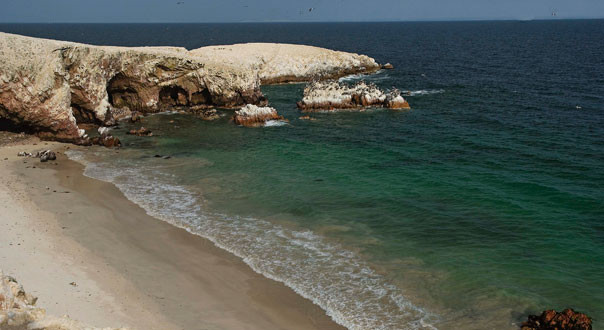
To get to the Crossbow Islands, we had to go to the port of "El Chaco" in Pisco. There we divided into smaller groups to cross to the islands by boat, six at a time, and thus began our journey to the island of sea lions and Humboldt penguins.
Something that surprised me on this journey was that, although it was very sunny in Pisco, as the boat went further out to sea, the temperature became colder. I was lucky that the teacher had warned us all to wear warm clothes, but, given the speed of the boat, if I had not brought my coat I definitely would have died of cold.
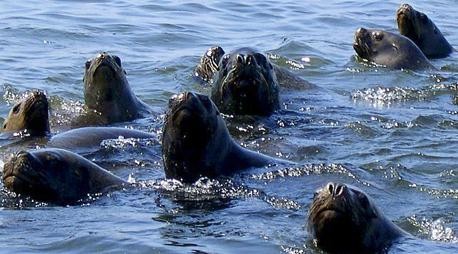
While we were on the boat we also had the opportunity to see from afar, one of the most enigmatic objects in Paracas, in the middle of the desert. Surely you know that I am referring to the famous Candelabra.
The Candelabra is huge - it is about 180 meters long and it is estimated to be about 2500 years old. However, despite the different research that has been done, its location and meaning remains one of the biggest mysteries on the southern coast of Peru.
Talking about the Candelabra reminds me of a woman that I admire a lot within the history of Peru. She was not actually Peruvian, but rather of German nationality and known as the "Lady of the Nazca lines”. She was called Maria Reiche and was a mathematician. When she arrived in Peru she was enchanted by the things she could find here, so she decided to dedicate all her life to the investigation of this part of Peru, from the Paracas Candelabra to the already very mysterious Nazca lines that are in Ica too.
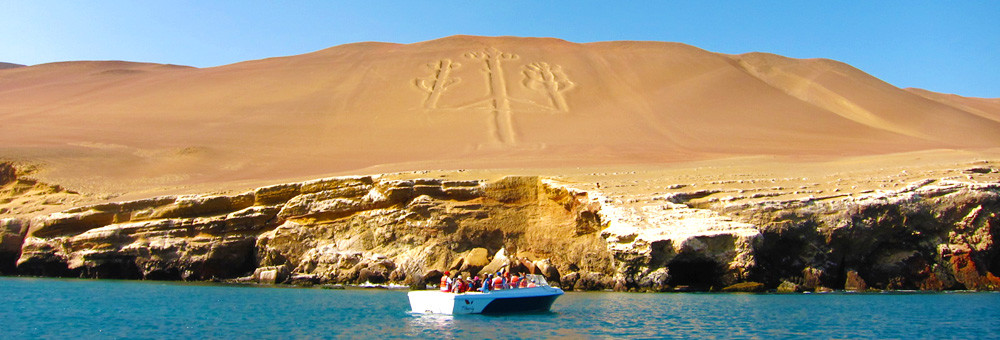
Maria Reiche studied the Candelabra for almost six months during the 1950s and came to the conclusion that it was an inspiration for the southern star. I also think that it could perhaps have been a kind of sign or signal for fishermen to know their location while out at sea.
On the other hand, it is not only the size and the age of the Candelabra which is astonishing, but also that, in spite of its age, it is still so well maintained that it could have been built yesterday! This technique that was used by the ancient Peruvians still astonishes the world today with its great work and for its legacy in the desert of the south of Peru.
I will also mention, that although this was the first time that I visited the Candelabra, it would not be the my only visist, as I went again in 2014. This time I visited it by luxury yacht from my hotel work where I worked, rather than by boat. That day was my birthday, so I spent a wonderful and special day with all my co-workers, which is why I remember that moment so well. However, just to make it clear that you don’t think I have enough money to spend on a luxury yacht, this trip, including the accommodation, which was a five-star hotel called Hotel Paracas Luxury Collection Resort and Spa, not the backpackers hostel where I stayed during this trip, was paid by the chain of hotels where I worked.

Anyway, I will tell you more about my experience in this first visit to Pisco. While I was on the boat with my friends, we had to wear a lifejacket, in case someone falls in the water during the tour, on which, little by little, we got closer to our main destination, the wonderful Crossbows Islands.
As we approached we could not only hear the sound of sea lions but also smell them, which in truth is quite a strong smell and something that I will never be able to forget. It entered strongly through my nostrils and I couldn’t avoid it even though I covered my nose. Don’t think that I am making a lot of fuss because the driver of the boat told us that we would soon acclimatise to the smell and this soon became something secondary.
But what did the smell matter when we knew that we were in the middle of a natural reserve and on an island with sea lions. Some even began to approach us and start to shout. There were some that were quite fat and so we could tell who were the males and who were the females - so that you know, the males are a little more grotesque while the females are slimmer.
On another island adjacent to the one with the sea lions, we could also see the Humboldt penguins, which are the only penguins that exist in the pacific sea and are very special. However, unfortunately they are now in danger of extinction.
Something else I remember is that the guide also told us that wolves usually eat the penguins which is why they are on a small island in order to protect themselves from being bait for other hungry animals.
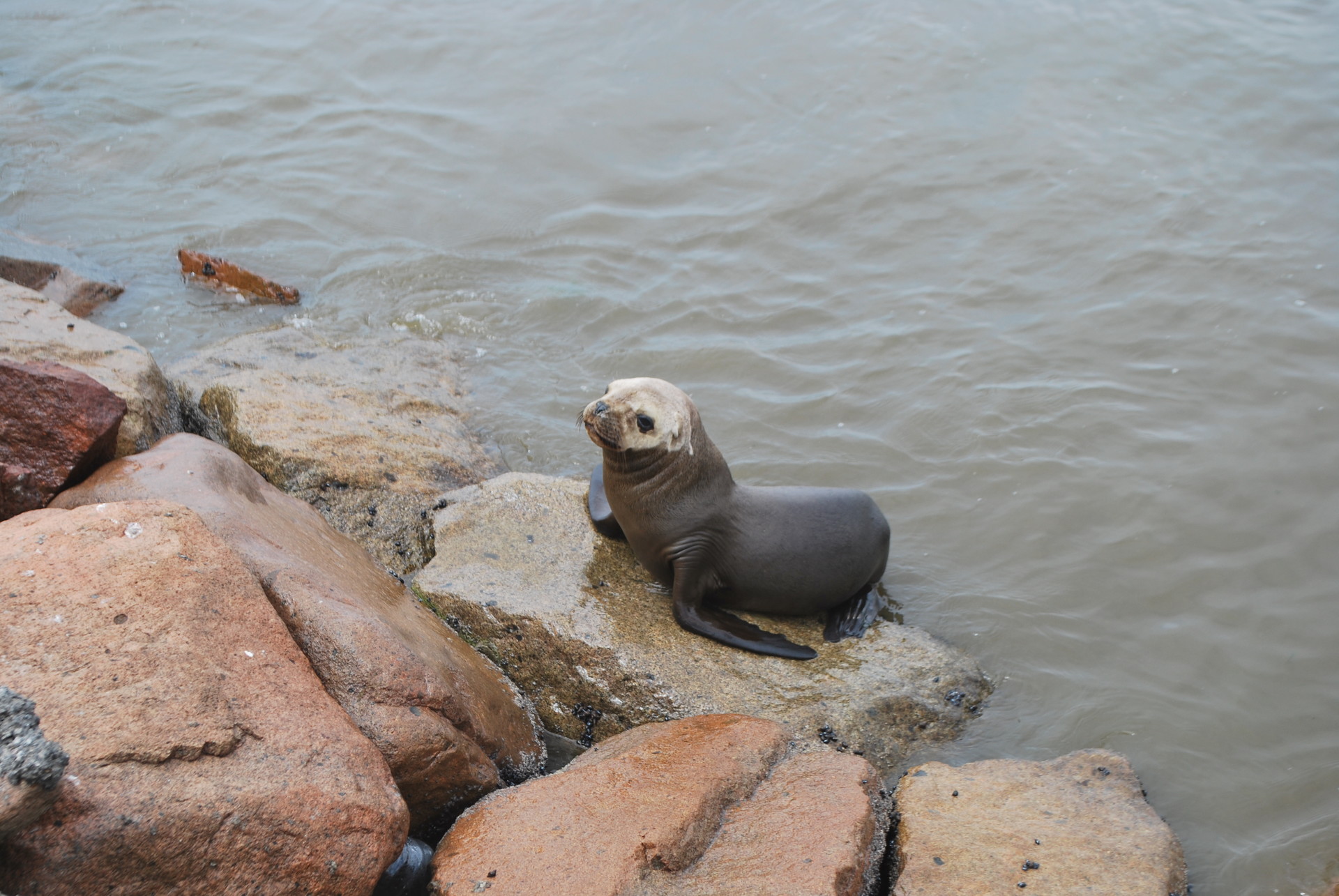
Don’t think that you will only be able to see sea lions and Humboldt penguins, as there are also birds, including the ones known as Guano birds. The history of these birds is also peculiar, because during the nineteenth century, their excrement became one of the reasons why a war broke out between Peru, Chile and Bolivia, also known as the Pacific War. This happened because the bird excrement could be used for gunpowder and other articles for war. At this point in history, the big power of the world was not the United States but England, and it was like they somehow made this bloody war develop among the Andean nations. These wounds have not yet been completely healed, despite the fact that more than a century and a half has passed.
One of the things that I also remember about this place, is that it is the place where we also saw two dolphins swimming near the boat. Being close to humans seemed to be a normal thing for the dolphins and they were not afraid. On the contrary, they were getting closer and closer, trying to make friends with us, and to seduce us by their beauty and good nature.
To give you more details about the location of the Crossbow Islands, they are only about thirty minutes from the coast of the port of Pisco and about an hour from the city of Ica which is the capital of the region.
We spent approximately 40 minutes in the waters between the Crossbow Islands. There were also pelicans that flew over the water in search of fish, It was then time to return to the port of "El Chaco" in Pisco.
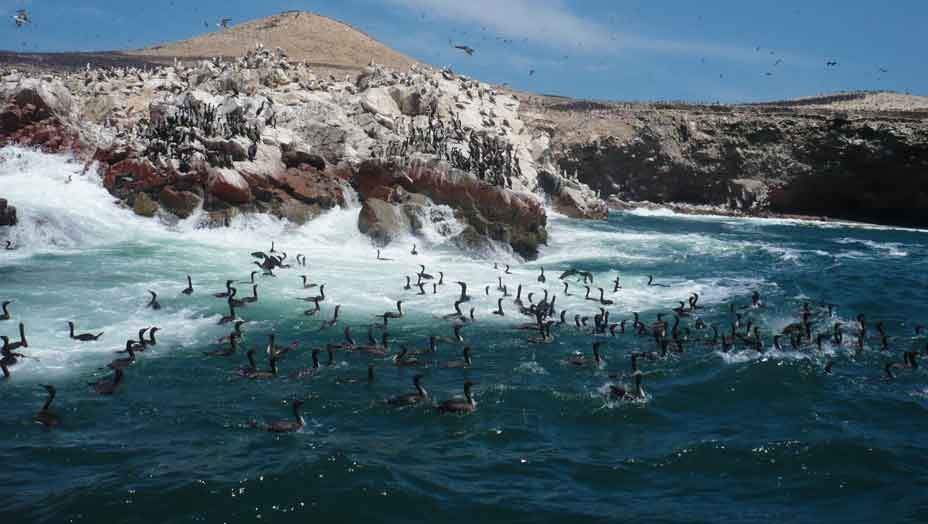
The Port of El Chaco is a small place but it is quite cosy and it doesn’t take very long to cross the port. The interesting thing is that we found a type of market where they sold all types of crafts, from shells to clay with pictures of the wolves of the sea and the birds of Paracas. I was there with my group of friends, walking through the different stalls buying souvenirs for my family. If you want to buy simple things, here you can find some keyrings and many other things for reasonable prices.
Another thing about the Port of El Chaco is that it is a place where you can find several restaurants in which you can try one of the best known dishes of Peru - the traditional fish ceviche. In Peru as you know, you can eat as much as you want, so I recommend that you try a delicious ceviche made with fresh fish, recently caught in the sea of Pisco.

Ceviche is a dish made from fish with onion, chilli, lemon and it is also accompanied with either potatoes or sweet potatoes, and of course the rich Andean corn. It is one of my favourite dishes and when I’m in Lima there is a restaurant that I always recommend to go to - Punto Azul. This chain has more than one restaurant in my city and here you can also enjoy a fresh glass of Chicha Morada which is a drink made with purple corn, cinnamon, cloves, sugar and lemon juice.
After having eaten our ceviche in the El Chaco port, we began our tour of the port. Here we noticed that the sea is not very good for swimming because it has lots of algae in it, but anyway it was nice to be able to walk in the waves at the edge of the sea and take some photos.

During the afternoon we went to the San Clement Cathedral of Pisco which I mentioned earlier, although it no longer exists because the last earthquake of 2007 destroyed it. It is a pity that this has happened.
By this time it was nightfall and for most of my friends, nightfall meant the return of the hangover from the previous day. We were enjoying every moment here, just being in the different parts of Peru, from the coast to the mountain range to the jungle, will remind us of the interesting things that you can find on your travels and how you should value it.
The following day we went to the desert beaches of Paracas. We came across some empty beaches near to the cathedral and we had the privilege of being the only ones there. We walked in a single file to the top of the hill where we could watch the sunset - that intense red that the colour of the sun really gave us was priceless. I was totally satisfied to have been able to go on this trip, but we still had one more place to visit.
The next day it was time to return to Lima, but not without first making a stop in the city where my mother is from, < strong>Chincha. This time we first went to the district of Grocio Prado where you can see the house of Melchorita, which is a Shrine to the blessed who were born in Chincha.
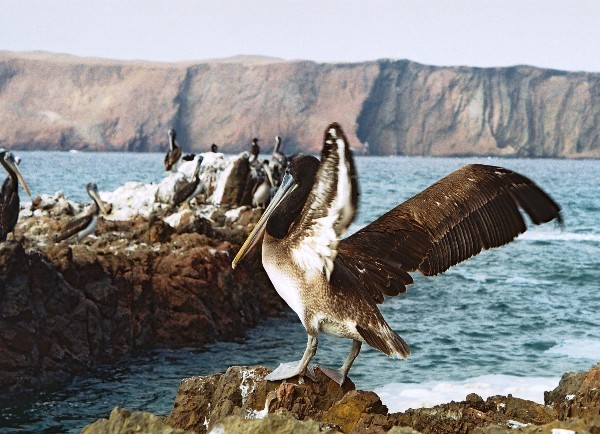
In the surroundings of the Sanctuary you can also see the artisan stalls of the Chinchana mothers. There is an area dedicated to the making of the fabric for every product you can imagine, such as hats, purses, bags, chairs and tables. The craft of the Chincha is quite colourful and you can find a lot other things, also characterised by Chincha, including lots of sweets and a great range of other things to eat. For example, there are quince sweets, jams and frejo colado (Peruvian black bean pudding), amongst other deserts.
After that we made a stop on our tour in a country restaurant that was called "el bosque", or the forest in English. This restaurant was in another district of Chincha, known as Sunampe. This district is known in Chinchana for its vineyards and for celebrating the festival of the grape harvest in the summer months.

We couldn't leave here without trying the tasty "sopa seca" or the dry soup in English. It is a delicious dish from this area of Peru, made with chicken, dry potato (which is not dry potato but rather fresh potato), noodles and many condiments from the area, such as annatto which gives it that intense red, spicy colour. This made us want to try everything that you can find in Chincha.
After having finished our Chinchano lunch, it was time to let our food go down and so we did nothing other than go to taste the wines that you can find in this region. We went to two wineries to taste the wine- one of them was "Tia Julia". I remembered that there was a kind of barrel which they use which makes the wine come shooting out, as if it were coming out of a pipe, because of the pressure so we decided to see it. They left us so that the 40+ people who were there could line up to taste the wine and take a picture to remember it.
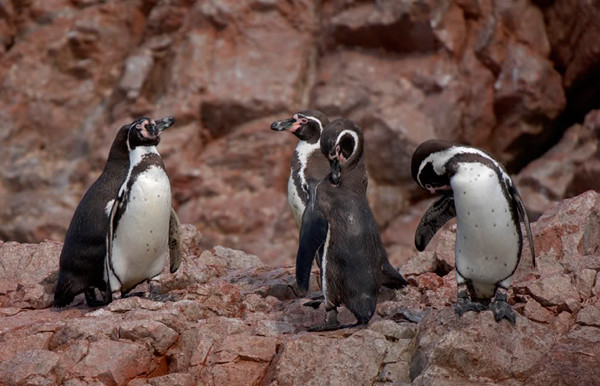
While I was on this tour, my grandmother, who is from Sunampe, found out that I was here with my friends from university, so she waited for me in the square and I met her and my aunt. She is muy grandmother on my mum’s side and so that is why, being chinchano, I have grown up with all the influences of all this area of Peru.
I also remember that when I was a child and in Lima I took some classes of celebration, which is the typical dance of this region. I don’t think I was made for dancing and I think I should, as they say, stick to what I know but at least I learned to move my body a little more with these lessons.
And so my dear friends I have come to the end of my trip to Pisco, which was, as I mentioned, the first trip that I made with my university friends and a trip that filled me with many experiences and also many funny memories. My advice is that if we are from Lima and we are so close to Ica, we should take advantage of getting to know it, bearing in mind that it is only a few hours away from the capital and, to be honest, who doesn't want to escape for the weekend! I assure you that you are going to have a great time; it is worth it and it is not very expensive - you can even spend less than I did.

To get to Pisco you can take a car that leaves daily from 28 de Julio Avenue in downtown Lima, or if you want a slightly more expensive option, but with a good service, I would recommend Cruz del Sur, a company which you can find in the terminal of Plaza Lima Norte as well as in Javier Prado Avenue. As you can see there is something to cater for everyone.
Thank you very much for reading about my experience on my trip to Pisco. I hope with all my heart that you will get to visit Pisco and all of these places and that you will be amazed by all the interesting things to see. Do not forget to bring your camera, your swimwear and your wallet so you that can buy souvenirs and also the sweets that you find here, which will leave you with a bigger desire to eat.
I hope you liked this experience and I hope I will see you again soon, so that I can tell you more travel stories about places that you can visit in Peru, a country that, as you can see, has everything. If we are Peruvians then we are Peruvians of Peru!
See you on another adventure and thank you very much, again. See you soon, Peru lovers!

Photo gallery
Content available in other languages
- Español: Mi primer viaje a Pisco
Want to have your own Erasmus blog?
If you are experiencing living abroad, you're an avid traveller or want to promote the city where you live... create your own blog and share your adventures!
I want to create my Erasmus blog! →



















Comments (0 comments)